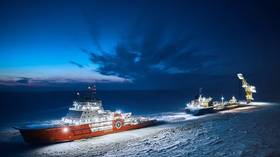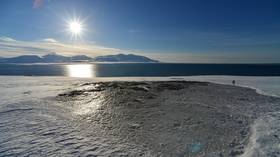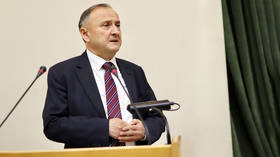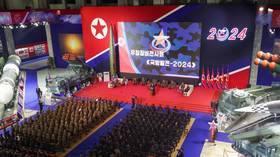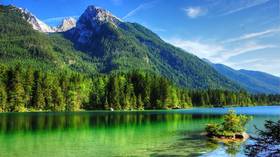The race for Arctic oil is heating up
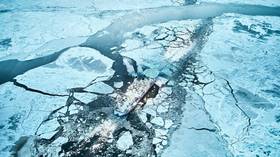
Norwegian and Russian companies are leading the charge in a renewed offensive for Arctic oil and gas riches.
Despite climate concerns and environmentalist backlash against exploration for oil and gas in pristine sensitive regions of the Arctic, companies continue to explore for hydrocarbon resources in the Arctic Circle, in Russia and Norway in particular.
The largest Russian energy companies are looking to explore more Arctic oil and gas resources on and offshore Russia, while Norwegian and other Western oil firms are digging exploration wells in Norway’s Barents Sea.
Those companies lead the development efforts to tap more Arctic oil and gas resources as legacy oil and gas fields both offshore Norway and onshore Russia mature.
Russia’s biggest energy firms Gazprom, Rosneft, Novatek, and Lukoil, and Norway’s oil and gas giant Equinor, as well as Aker BP and ConocoPhillips, are the top oil and gas producers in the Artic region, data and analytics company GlobalData said in a new report. Gazprom is the undisputed leader in Arctic oil and gas production, followed, at a long distance, by two other Russian firms, Rosneft and Novatek, GlobalData’s estimates show.
Russian firms are ramping up exploration in Russia’s Arctic, while Equinor and other Western companies drill exploration wells in Norway’s Barents Sea, hoping for a significant discovery that could add to the Johan Castberg oilfield - a massive discovery which was made in 2011, but which hasn’t been replicated in the Barents Sea so far.
Yet, both Russia and Norway face specific challenges in getting the most out of their respective Arctic oil and gas resources.
In Russia, the government has made Arctic oil and gas development a key priority and offers tax breaks for firms exploring in the area.
Energy giants Gazprom and Rosneft dominate the exploration and development efforts in Russia’s Arctic. Offshore, Gazprom’s Prirazlomnoye field is currently the only producing Russian oil and gas project on the Arctic Shelf.
Also on rt.com Japanese energy majors may invest in Russia’s oil megaproject in ArcticBut even with tax breaks, Russia may find it hard to develop its offshore Arctic resources, due to the U.S. sanctions banning collaboration on Russian deepwater, Arctic offshore, or shale projects with Gazprom, Gazprom Neft, Lukoil, Surgutneftegas, and Rosneft. These are the largest energy firms in Russia and they don’t have access to capital at western banks to develop such projects. In the wake of the sanctions, many Western oil firms withdrew from joint ventures with Russian companies, which are now left without partnerships in technology needed to explore, drill, and potentially produce and process hard-to-extract oil and gas resources.
Although Russian firms downplay the effects of the US sanctions on their development plans, and although domestic companies are focused on developing in-house technology solutions to replace foreign-sourced tech, analysts believe that 100-percent local content technology in challenging projects would likely take years to implement.
Financing for large onshore projects in the Arctic is not easy either. Rosneft, which wants to develop the Vostok Oil project, to “implement a complex development program for a new oil and gas province in the north of the Krasnoyarsk Territory,” is looking east to gather funding for the US$157 billion project - to Japan, India, and China.
Russia’s largest private natural gas producer, Novatek, is one of the success stories of Arctic resource development. Novatek - which already exports liquefied natural gas (LNG) from the Yamal LNG plant - gave last year the go-ahead to its second LNG project, Arctic LNG 2 on the Gydan Peninsula. Novatek’s partners in the ventures are France’s Total with a minority stake as well as Chinese and Japanese companies.
Last year, Russian officials said that the Arctic area could become the key driver of Russia’s natural gas production in less than two decades, as it has the potential to produce 90 percent of all the gas produced in Russia by 2035.
Norway’s Arctic areas open to exploration are parts of the Barents Sea, where companies are struggling to finally make a large-size discovery after Johan Castberg. Norwegian authorities say that the Barents Sea holds 64 percent of the yet to be discovered resources on the Norwegian Continental Shelf, while the North Sea and the Norwegian Sea each are estimated to hold 18 percent of the undiscovered resources.
Last year, just five wells were drilled in the Barents Sea, fewer than in 2018. In 2019, a total of 17 new discoveries were made offshore Norway, of which only one was in the Barents Sea.
Norway’s Equinor says that it continues to explore in the Barents Sea because more oil will be needed in the world just to maintain supplies.
“Discoveries in the Barents Sea can lead to significant economic development, nationally and locally. Based on our understanding of the geology, we hope to find high quality light oil that’s in demand—and better for the climate. The wells we drill in the Barents Sea are cheaper than many others, thanks to the geology and shallower waters,” says the Norwegian giant.
Also on rt.com Norway’s trillion dollar fund isn’t ditching oil after allIn 2020, Equinor will focus on exploration in the western part of the Barents Sea, Tim Dodson, Executive Vice President, Exploration at Equinor, told Reuters in November.
Norway and Russia are leading Arctic oil and gas development, but they both face challenges in making the Arctic the next oil hotspot.
This article was originally published on Oilprice.com
